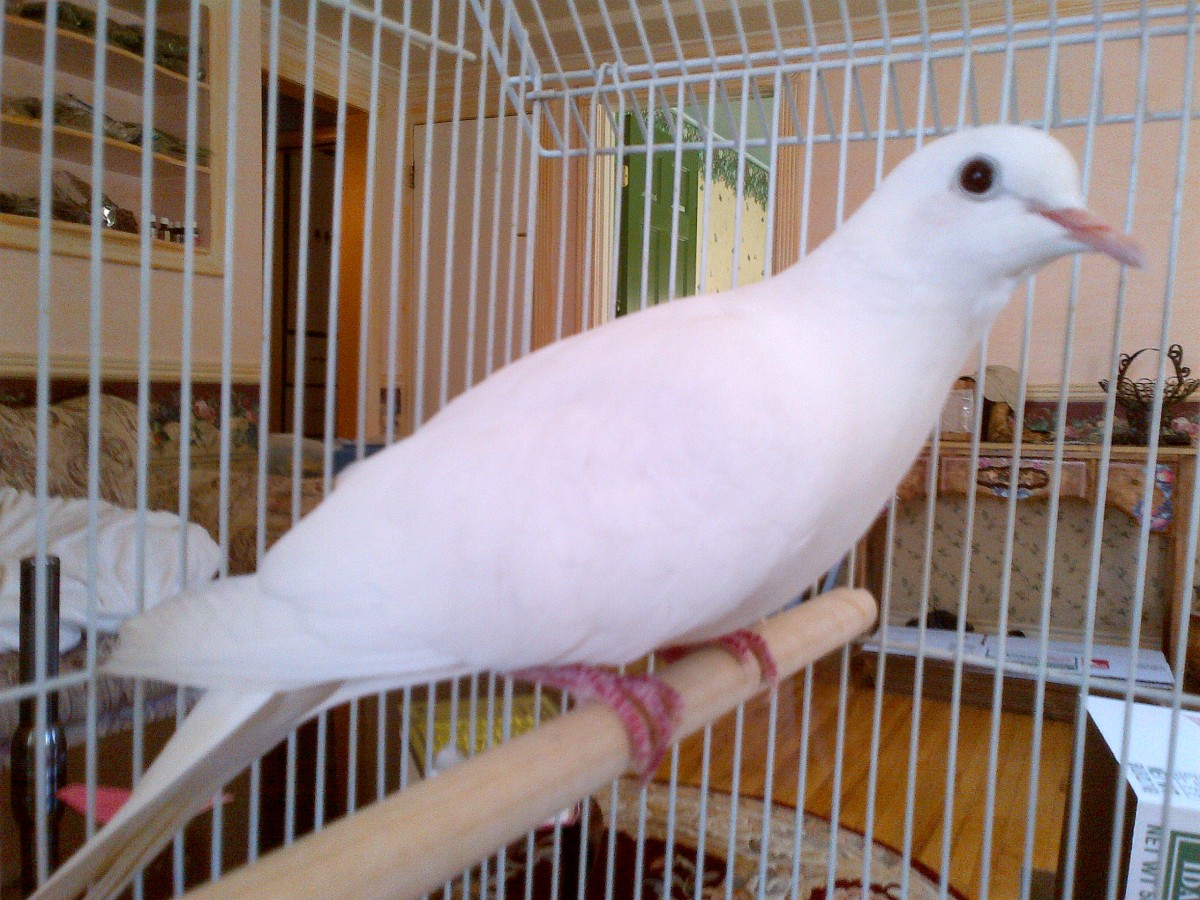Java doves

Food and Maintenance
They will eat a variety of seeds and grains, which makes feeding them quite simple.
They will also eat tiny pieces of fruit, vegetables, and hard-boiled eggs as well as nipping at sprouts or other edible greens.
They require very little in the form of daily maintenance aside from fresh water, which they have a tendency to leave droppings in, and attention.
Cage and Care Tips
Some tips about keeping Java doves in a cage will save you time and money:
- Java doves love to sit on a perch; natural wood bars or branches work great, and you’ll soon discover that they spend most of their time perched.
- Do not bother with cage toys, bells, or colorful objects as your Java dove will ignore them.
- If your cage allows for multiple types of perches to be mounted, do so.
- A cage with a mesh bottom and clean-out tray is a must.
- Seed cups can be attached to the cage sides, or seeds can be spread on a paper plate and placed on the cage floor, away from the bars, to minimize droppings from contaminating the seed.
- A water basin must be part of the cage anatomy. Java doves do not drink much, but when they do, they will dip their beaks in quite deep, so ensure the water basin size meets their needs.
- Alternatively, you can put a bowl on the cage floor; just be sure it’s heavy enough to prevent tipping over when the bird perches on an edge.
- Water must be changed daily.
Once a week, everything should be cleaned: the cages, the walls, the windows, and the floors. Java doves use their beak to sift through seed cups, spreading the unwanted seeds across the cage bottoms. It’s nice to take the bottom pan outside and leave those seeds for the wild birds around your house, especially in winter months.
Also in winter months, a portable cool mist humidifier helps to minimize dust from bird dander and provides essential moisture for newborn birds.
Bird Baths
Doves enjoy bathing, and it will benefit you to encourage them to bathe to minimize dander and dust. Use a large glass Corning Ware casserole dish or similar type of bowl and fill it with hot water between 2 and 3 inches.
Java Doves have an internal body temperature of about 104°F, and they like a hot bath, not lukewarm as it will actually chill them. Do not make the mistake of thinking they want a cool water bath because it’s summer time.
HOW TO COLOR YOUR DOVES
First of all you will need to order your food coloring from
Powder Food Colors 3gr Jars
Color: Red Powder Food Color $1.99
Powder Food Colors 3gr Jars
Color: Blue Powder Food Color $1.99
And whatever other colors you want.
- You will need to wash your doves in DOVE dishwashing detergent and be careful not to get any soap in their eyes.2. You will need to get a spray itemizer (like a well washed old Windex bottle) use about a ¼ teaspoon of food coloring to about 2 inches of warm water.
- Make sure you are wearing long armed rubber gloves when you handle the food coloring otherwise your skin will be colored also4. While the doves are wet and washed then begin to spray your birds with the food coloring, working the color into and around the feathers
5. Use a cotton ball or a rag to color the head. The food color will spread as the day goes on so no need to worry about getting close to the eyes.
6. Lightly blow dry the main feathers taking care not to get the hair blower too close to the birds. Make sure you have a warm place for the birds to dry out.
It is recommended that you keep the birds separate from the other birds as the food coloring has a transfer quality. So, your white doves will wind up with splotches of colors.
After a few days it should be fine to let the colored birds mingle with the white ones with little if at all any chance of color transferring to your other birds
Result should be a soft bright beautiful feathers.
In time the new feathers will grow out and you will have to re-color your birds.
Remember to treat your birds with love and care. Coloring is no different that if you were to add food coloring to your own hair. It is safe.